Suwat Waterfall may be just what you’re searching for if you’re looking for a hidden gem in Bali. Suwat Waterfall, in Ubud, is a remote and peaceful site that has yet to be discovered by the tourist crowds. It’s a small canyon-like setting with high cliff sides and a natural lake ideal for swimming and relaxation.
The waterfall is 15 meters high and cascades from a jungle clifftop into a deep natural pool. Behind the falls, there’s even a hidden grotto and big mossy stones that add to the fairytale-like ambience. If you’re feeling daring, you can even float around on a bamboo raft and take in the breathtaking panorama from a different angle. Suwat Waterfall is ideal for anyone wishing to escape the noise and bustle of Bali’s busier tourist areas.
Suwat Waterfall Location
Suwat Waterfall is a must-see if you’re looking for a hidden gem in Bali and one of the Bali tourist destinations. The waterfall is located in the small hamlet of Suwat in Bali’s Gianyar Regency and features a natural pool where visitors can swim.
Routes of Access
You may drive to Suwat Waterfall from Kuta or Seminyak, which takes about 1 hour 30 minutes by car or motorbike. You can also hire a private car and driver or take a taxi. The drive is only 30 minutes if you are staying in Ubud. When you arrive in Suwat Village, park your car and walk down a short trail to reach the waterfall.
Landmarks in the Neighborhood
Suwat Waterfall is between Ubud and Tegenungan Waterfall, two major tourist spots in Bali. If you want to explore the area around Suwat Waterfall, you can go to the Bali Zoo or the Bali Bird Park, both of which are around a 30-minute drive away.
Overall, Suwat Waterfall is a gorgeous and hidden site in Bali that is well worth the trip. Whether you want to swim in the natural pool or simply enjoy the surroundings, it’s a must-see for anyone visiting Bali.
Suwat Waterfall Height and Width Physical Characteristics
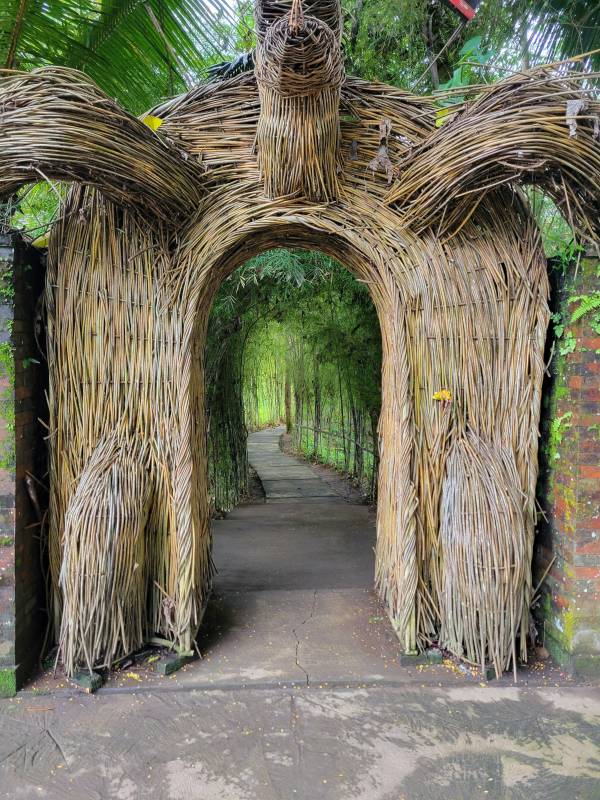
Suwat Waterfall is a breathtaking natural site in Gianyar, Bali. The waterfall is roughly 15 meters (50 feet) tall and 10 meters (33 feet) wide. The waterfall is surrounded by thick flora and set in a tiny canyon, creating a calm and peaceful environment.
The water rushes down from the cliff face into a deep natural pool, which is ideal for swimming and cooling down on a hot day. The pool is flanked by enormous mossy stones, which contribute to the area’s fairytale-like aura.
Water Supply
Suwat Waterfall gets its water from the neighboring mountains and is fed by a natural spring. The water is extremely clear and is considered to be restorative. The waterfall is at its most impressive during the rainy season, which runs from November to March, although it is well worth seeing during the dry months.
A variety of flora and animals, including monkeys, birds, and butterflies, may be seen in the region surrounding Suwat Waterfall. The area’s abundant flora and natural beauty make it a popular destination for both nature enthusiasts and photographers.
In summary, Suwat Waterfall is a lovely natural attraction with a height of 15 meters and a breadth of about 10 meters. It is supplied by a natural spring and surrounded by lush vegetation and a diverse range of flora and fauna. The place is ideal for swimming, cooling off, and relaxing in the serene surroundings of the waterfall.
Biodiversity in the Suwat Waterfall Area
Suwat Waterfall is not only a magnificent natural attraction, but it is also a biodiversity hotspot. The surrounding area around the waterfall is home to a variety of flora and fauna that thrive in the lush tropical environment. In this section, we will look at the various types of biodiversity that may be found at Suwat Waterfall.
Flora
The area near Suwat Waterfall is densely forested, with a wide variety of plant species thriving there. The lush greenery surrounding the waterfall produces a cool and wet environment ideal for the growth of many different sorts of plants. Some of the most common plants found at Suwat Waterfall are:
- Ferns: Ferns are prevalent near the waterfall, and their rich green leaves add to the area’s natural beauty.
- Bamboo: Another plant that grows in the vicinity of Suwat Waterfall is bamboo. Bamboo stalks, tall and slender, form a lovely backdrop to the cascade.
- Wildflowers: A variety of wildflowers, including orchids, hibiscus, and frangipani, bloom in the area surrounding the waterfall.
Fauna
The area near Suwat Waterfall is home to a wide variety of animal species, many of which are native to Bali. Here are some of the most common animal species to see around Suwat Waterfall:
- Birds: Many bird species live in the region around the waterfall, including kingfishers, egrets, and hornbills.
- Butterflies: Many species of butterflies, including the common bluebottle and the swallowtail, thrive in the rich greenery surrounding the waterfall.
- Fish: Many species of fish live in the natural pool at the base of the waterfall, including tilapia and guppy.
Overall, the area surrounding Suwat Waterfall is a biodiversity hotspot, featuring a diverse range of plant and animal species. Take time to admire the natural beauty and diversity that surrounds you while you explore the area.
The Historical Importance of Suwat Waterfall
Suwat Waterfall, also known as Air Terjun Suwat, is a hidden treasure in Bali near Ubud. The waterfall is not only beautiful in nature, but it also has historical and cultural significance. The following are some historical facts regarding Suwat Waterfall:
- Sacred Site: The waterfall is considered sacred by the Balinese people. They think that the waterfall is inhabited by spirits and deities who guard the area. As a result, the waterfall is frequently used in religious rites and offerings.
- Suwat Waterfall serves as an essential source of water for the nearby settlements. The waterfall’s water is directed via a network of irrigation canals before being used for agricultural, drinking, and other daily requirements.
- Traditional Medicine: For ages, the Balinese have used the water from Suwat Waterfall as a traditional medicine. They think the water has medicinal capabilities and may treat a variety of maladies including skin problems, fever, and headaches.
- Suwat Waterfall was exploited as a source of hydroelectric power by the Dutch during the colonial era. To generate electricity for the surrounding town of Ubud, they erected a small dam and power plant near the waterfall.
Suwat Waterfall is still an important cultural and ecological monument in Bali today. Visitors can admire the waterfall’s splendor while learning about its historical and cultural significance.
Information for Visitors
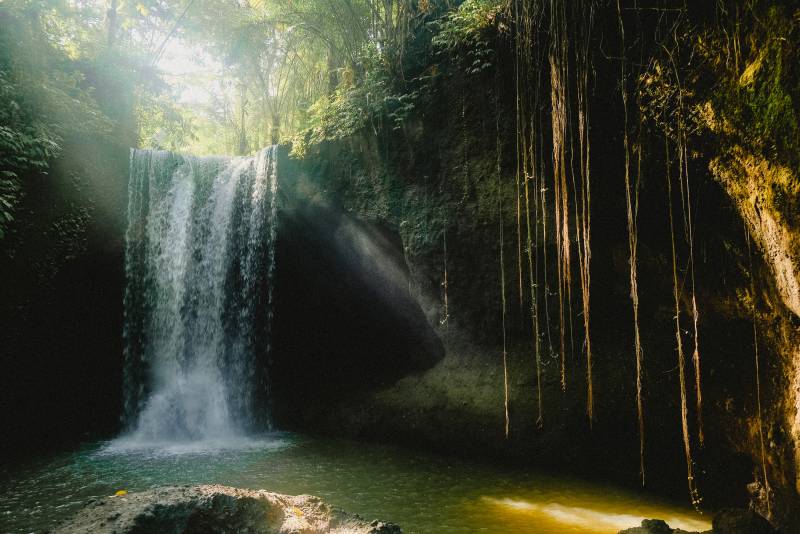
If you’re going to Suwat Waterfall, there are a few things you should know first. Here is some useful visitor information to help you make the most of your stay.
When is the best time to visit?
Suwat Waterfall is best visited during the dry season, which lasts from April to September. The waterfall is at its peak during this season, and the weather is often dry and sunny. Keep in mind, though, that this is also peak tourist season, so the waterfall may be busy. If you prefer a more relaxed atmosphere, travel during the shoulder season, which runs from October to March. The waterfall may not be as full during this time, but you’ll have a better opportunity of enjoying it without the throng.
Safety precautions
When visiting Suwat Waterfall, it is critical to take precautions to ensure a safe and memorable experience. Here are a few things to remember:
- Wear suitable footwear: The route to the waterfall can be slick, so wear traction-enhancing shoes.
- Keep to the approved paths: Because the area around the waterfall can be rough and unstable, keep to the prescribed paths to avoid mishaps.
- Avoid climbing on the rocks around the waterfall: Climbing on the rocks around the waterfall can be risky, so avoid doing so.
- Avoid plunging into the pool since the water may be deeper than it appears and there may be pebbles or other hazards beneath the surface.
- Keep a check on your belongings: Don’t leave your belongings unattended in tourist locations, as theft can occur.
You may assist ensure a safe and pleasurable visit to Suwat Waterfall by following these safety precautions.
Conservation Initiatives
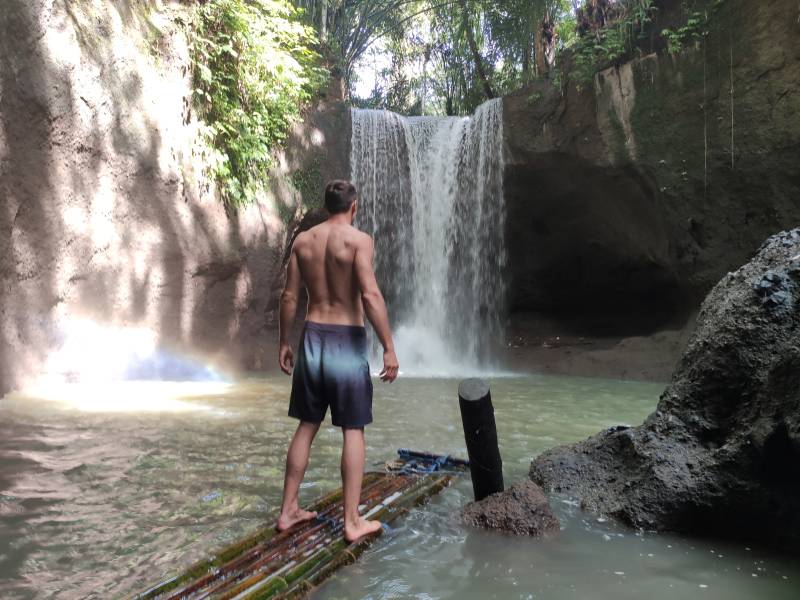
Suwat Waterfall’s natural beauty and surrounding surroundings have been preserved via conservation initiatives. The following are some of the measures that have been implemented:
The National Park Service
The Suwat Waterfall is located in Ubud, which is managed by the Department of National Parks, Wildlife, and Plant Conservation. This department is in charge of safeguarding the park’s natural resources, including the waterfall. They have put in place a number of safeguards to guarantee that the region is conserved for future generations to enjoy.
Waste Control
Waste management methods have been implemented to reduce littering and contamination. Trash cans are located near the entrance and along the trails that lead to the waterfall. Visitors are advised to properly dispose of their rubbish and not leave anything behind.
Education and Public Awareness
The National Park Service has undertaken educational programs to improve public understanding about the value of conservation. Visitors are informed about the park’s rules and regulations, as well as the environmental consequences of their actions. The goal is to promote responsible tourism and encourage people to enjoy the area’s natural beauty without causing harm.
Tourism that is environmentally friendly
Sustainable tourism practices have been adopted to reduce the environmental impact of tourism. The number of visitors to the waterfall is restricted in order to avoid congestion and damage to the environment. The trails leading to the waterfall are kept in good condition to prevent erosion and damage to the natural vegetation. Visitors are also advised to utilize eco-friendly items and avoid actions that are harmful to the environment.
Overall, conservation activities are critical to preserve the natural beauty of Suwat Waterfall and its surroundings. We can ensure that this stunning natural treasure is preserved for future generations to enjoy by implementing sustainable tourist practices and boosting conservation awareness.
The Effect on the Local Community
Suwat Waterfall is more than just a lovely natural sight; it also has a profound impact on the local community. The waterfall has the following effects on the area and its people:
Tourism Growth
Suwat Waterfall is a tourist attraction that has just lately gained fame. The local community benefits from more tourism as more people discover this wonderful destination. Visitors to the waterfall frequently stay in adjacent hotels, dine at local restaurants, and buy souvenirs from local merchants, boosting the local economy.
Creating Jobs
Tourism growth also offers work opportunities in the local community. People that reside near the waterfall can find work as tour guides, drivers, hotel employees, and other positions. This generates cash for the community and contributes to the reduction of poverty in the area.
Environmental Implications
While the Suwat Waterfall is a magnificent site, it also has an environmental consequence. Increased tourism can result in littering, pollution, and environmental damage. The local community, however, has made steps to offset these effects. For example, trash cans and signs encouraging people to keep the area clean have been placed. They also keep an eye on the waterfall and its environs to ensure that the environment is safe.
Cultural Survival
Suwat Waterfall is located in a culturally and historically rich area. The local community feels strongly about the land and the environment, and they work hard to preserve their cultural legacy. They are able to preserve their way of life and pass it down to future generations by encouraging sustainable tourism and protecting the environment.
Finally, Suwat Waterfall has a huge impact on the surrounding neighborhood. It stimulates the economy, creates job opportunities, and aids in the preservation of the region’s ecology and cultural history.
Questions and Answers
What are the hours of operation for Suwat waterfall?
Suwat waterfall is open to the public daily from 8 a.m. to 5 p.m.
What is the cost of visiting Suwat waterfall?
Suwat waterfall admission is IDR 20,000 per person. Children under the age of ten are admitted free of charge. *the price could change every time
What is the most convenient route to get to Suwat waterfall?
Hiring a driver or taking a tour is the most convenient way to travel to Suwat waterfall. The waterfall is around 30 minutes from Ubud in the Gianyar region. You can also rent a scooter and drive yourself there, although the roads are tiny and hilly.
Is it permissible for people to swim at Suwat waterfall?
Yes, guests are permitted to swim in the natural pool at the waterfall’s base. The water is nice and invigorating, but be cautious because the rocks are slick.
Are there any additional waterfalls in Bali besides Suwat?
Yes, there are many magnificent waterfalls in Bali. Tegenungan waterfall, Gitgit waterfall, and Sekumpul waterfall are among the most popular.
What are the characteristics of Kanto Lampo waterfall?
Kanto Lampo waterfall, located in the Gianyar regency of Bali, is another stunning waterfall. It has a natural rock wall that forms a distinctive water curtain. Visitors can swim and snap photos in the shallow pool at the base of the waterfall. The admission price is IDR 15,000 per person.







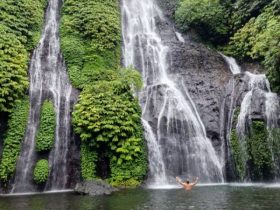
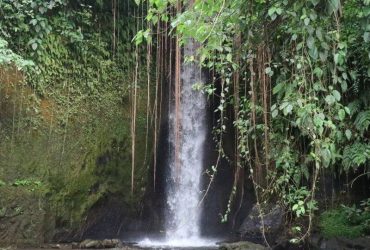
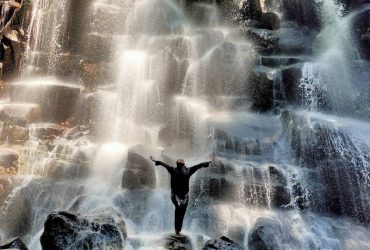

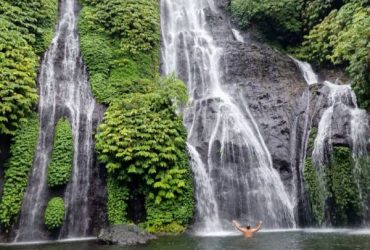
Leave a Reply
View Comments